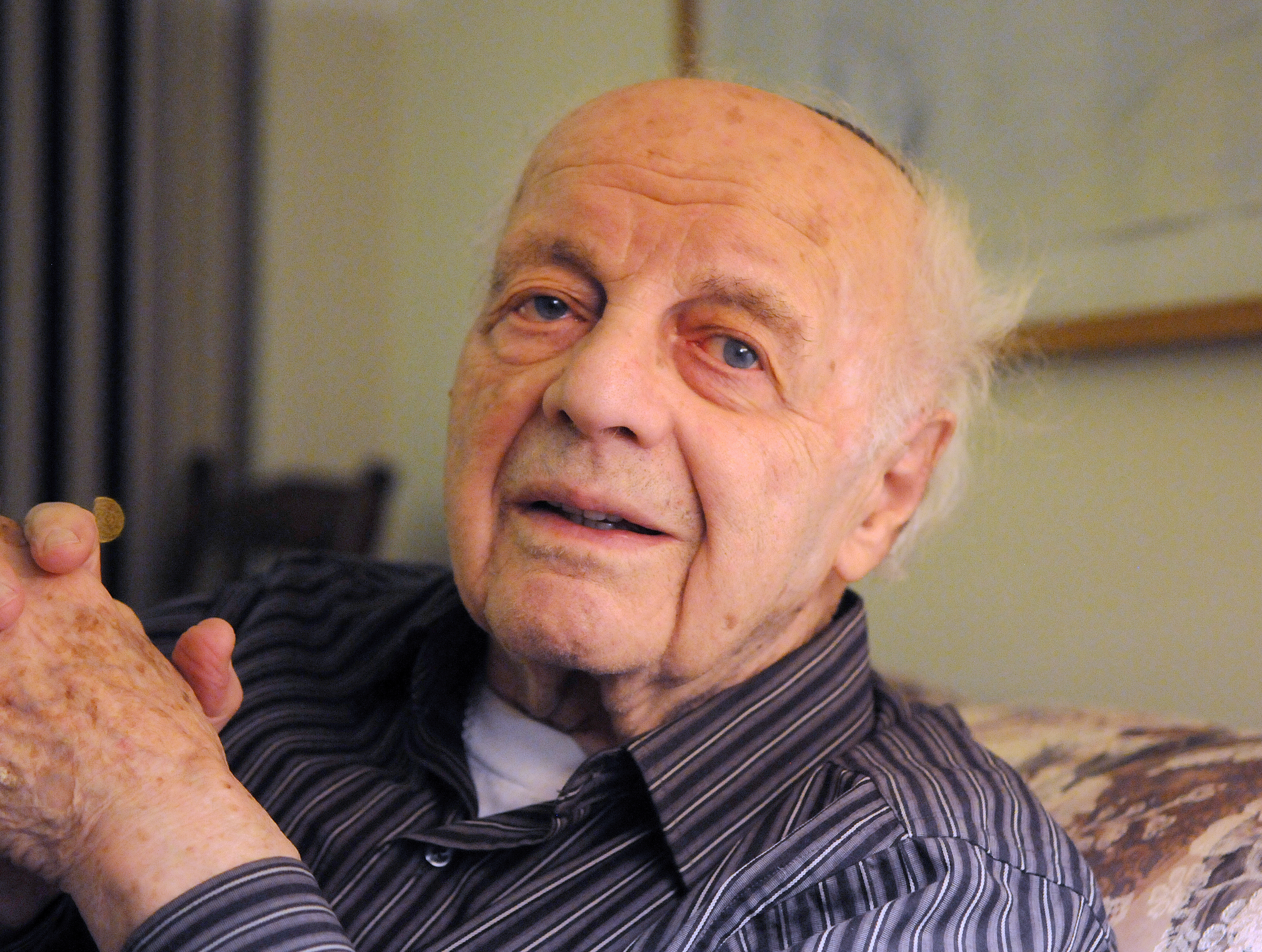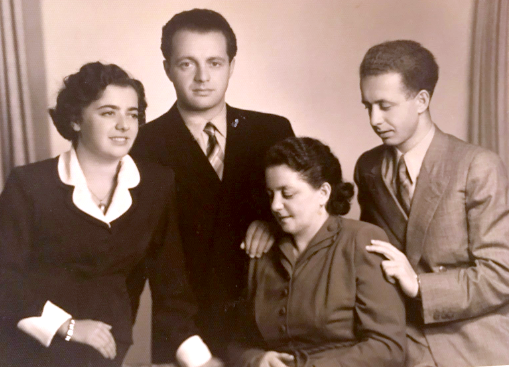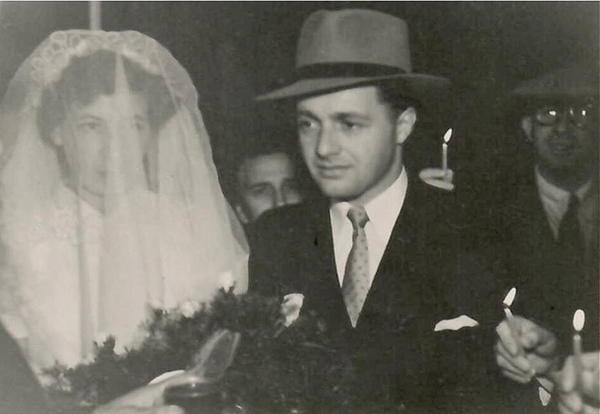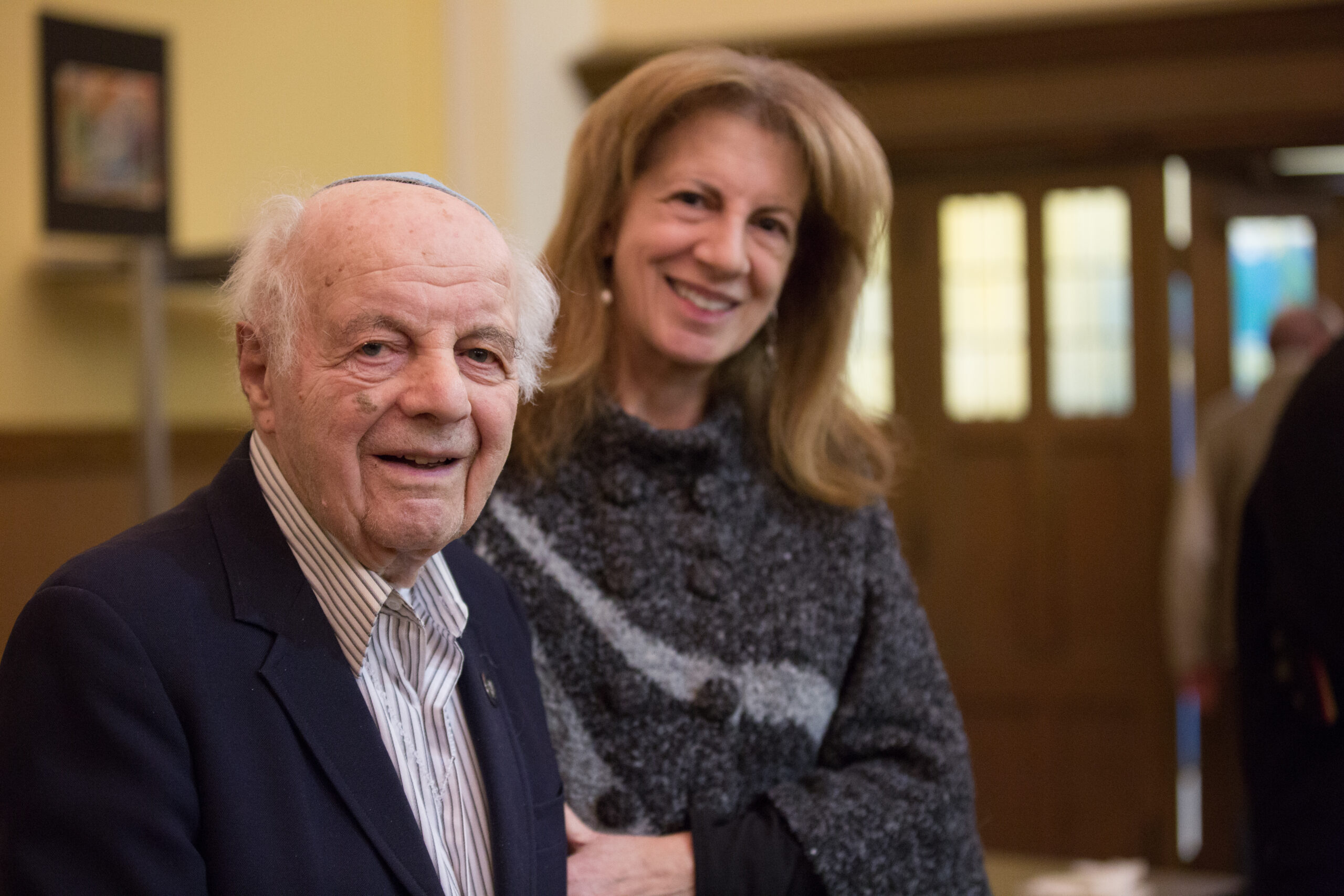
When the Germans invaded his tiny town of Horodok, Poland, Moshe Baran (Dec. 10, 1920 - Feb. 3, 2024) was tracking flax purchases from farmers for the Soviet Union. The job was “Kafka-esque,” he said — he wrote reports all day every day that no one read.
Before the Germans, the Soviets had come in 1939 and upended every aspect of life in the town of about 150 Jewish families, which now lies in modern Belarus about 37 miles northwest of Minsk. The Soviets closed businesses and the synagogue; banned religious observance, Zionist meetings and non-Party newspapers; and confiscated all privately owned radios. People began reporting each other to the authorities.
On June 22, 1941, the Nazis launched a surprise invasion. Baran joined crowds fleeing the area, making his way toward Minsk.
But suddenly, his appendix ruptured. In tremendous pain, he managed to walk home. His family was eventually able to get him to a hospital via horse and buggy, and find some anesthesia at another hospital so doctors could remove the appendix before it killed him. For the next year, Baran would wear the same clothes every day, having few belongings left.
Nazi rule proved terrifying. Violence, robbery and humiliations became commonplace. Baran saw German soldiers shoot his uncle dead in his yard. Forced labor began, and Baran had to cut wood in the forest with other young men.
His health rebelled again. While he was bedridden with kidney stones, the Nazis made all the Jewish men pull grass and weeds from between the street cobblestones. In a rare act of mercy, a German soldier opened Baran’s bedroom door, took one look at him and went away.
In the spring of 1942, the Nazis forced all the Jews from the town — about 1,000 people — into 15 to 20 houses in a makeshift ghetto. Baran and some other young people were sent to nearby Krasne as slave laborers. His brother and about 50 others were sent to a smaller labor camp in a neighboring town.
Baran remembered walking a half-hour to work each way, working 12-hour days laying track and subsisting on a starvation diet. He remembered camp inmates “swollen from hunger.” Inmates could be killed for petty or imagined offenses, like the three people shot dead because their Jewish stars weren’t “well-attached” to their clothes. The Jewish population in the Krasne ghetto swelled as survivors of Nazi massacres were sent there.

On June 11, 1942, the Nazis destroyed what remained of Horodok. According to a family history compiled by Baran’s grandson Boaz Munro, the Nazis and Belarussian police separated the healthy men from everyone else and marched them away. As the men were marching, they saw trucks with the rest of the village — women, children, the sick and the elderly — turn off the road and go into the woods.
At that moment, the men realized that the people on the trucks were headed to their murders. These roughly 700 people were forced off the trucks into a wooden barn, which the Nazis splashed with gasoline and set on fire. Anyone who escaped the barn was shot with automatic weapons.
Baran’s parents and sisters had been in hiding and weren’t part of the massacre. They and his brother made their way to the Krasne ghetto, where the family was reunited after about seven months apart.
Baran and his friends saw that staying in Krasne spelled certain death.
“We were isolated and we lost our identity as people, which meant whatever the Germans wanted, we had to deliver,” Baran said in a video for the Eva Fleischer Oral History Project. “I realized things are not going to get any better.”
They wanted to join partisans in the woods. But the partisans were highly suspicious of strangers. They had even killed a different group of Krasne escapees.
Escaping carried other risks. If caught, the would-be escapees would be killed. If they weren’t caught, the Nazis often killed other Jews in the ghetto in retaliation.
Still, Baran and two friends planned to smuggle guns out of the ghetto to offer to the partisans in hopes they would then be allowed to join forces. The two friends would secretly move Soviet gun parts out of the warehouse where they worked, wrap the parts in rags to hide them, then leave them in a junkyard.
Each day after work, Baran would ask a guard for permission to get some of his things from the junkyard. This particular guard, who never yelled at the prisoners and didn’t seem to like oppressing them, would allow it. Baran would then retrieve the gun parts, sometimes hiding them in his pants. In the ghetto, he and his friends rebuilt the guns.
Baran met a woman in the ghetto who said she would lead them to the partisans if they, in turn, helped her and her two small children escape. One night, the group found a place next to a building where the barbed wire ended. Hidden in the dark, they dug under the wire. Several nights later, while clouds hid the moon, they slid under the barbed wire and fled into the forest.
They walked deep in the woods all night until they came to some dozens or hundreds of Jews who had dug bunkers in the ground. These people helped Baran and his friends smoke the lice out of their clothes. The woman who led them there left with her children, and Baran never saw her again.
Now that he was relatively safe, Baran wanted to get the rest of his family out of the ghetto. He was able to pay a Polish farmer in various goods to smuggle out his brother, a sister and the weapons.
But Baran’s other sister was too ill to leave, and his father seemed hopeless and resigned. His mother didn’t want to abandon them. Baran was furious, according to the family history. He and his brother begged their mother to leave and after a time, she did. Baran believed his was the only mother from his hometown to survive the war.
Two days after her escape, the Nazis rounded up everyone in the ghetto, including Baran’s father and sister, and took them inside a nearby barn. They made their victims strip to their underwear and shot everyone to death, which took all day. Then they burned down the barn.

Partisans took the weapons that Baran and his friends had assembled and sneaked out of the ghetto. Baran was able through contacts to join a group of Russian soldiers left behind enemy lines after their 1941 invasion.
With this group, Baran collected supplies dropped behind enemy lines by Soviet planes. He also fired guns at Nazi garrisons to provide cover for other partisans whose job was to kill the German soldiers. Sometimes he stood guard while partisans planted mines on railroads.
More routinely, he and the partisans took food and supplies from local farmers. If the farmers refused, the partisans told them they would “pay a price for that.” “This is how we got our food,” Baran said in the video.
As the German military began retreating near the war’s end, the partisans got stuck between two German lines. For about 10 days, they wandered through swamps, drinking muddy water, eating dried bread and sleeping by hugging trees.
Baran eventually rediscovered his family in the woods. They then lived under Soviet occupation again and Baran again was enlisted for bookkeeping. This time, he nearly faced death when a local official forced him into the Soviet army with the war still in force.

At a nightly roll call, an officer asked each man for his occupation, and when Baran replied “bookkeeper,” he found himself appointed the aide to an alcoholic head finance officer.
He ended up after the war in a displaced persons camp in Austria, where he met his future wife, Malka Klin, a slave labor survivor from Poland. The pair eventually married, settled in New York and raised a family.
They moved to Pittsburgh in 1993 to be near their daughter, Avi Baran Munro, now retired as head of school of Community Day School, a Jewish K-8 institution. Malka died in 2007.
An apartment building manager for most of his career, in later life, Baran carried a business card that listed his occupation as “philosopher.”
“If you have something of importance and you don’t share, it will die away,” he said in the video. “If you can contribute something to history, you have an obligation to do it.”
Laura Malt Schneiderman, lschneiderman@post-gazette.com.
Click images to learn more.
Laura Malt Schneiderman
Ed Yozwick
Advertisement
Advertisement